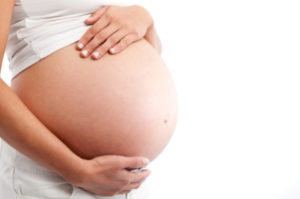 Planned home births are safe, as safe as births at a birth center. Those are the conclusions from a large Washington state study looking at low-risk women delivering with a licensed midwife at either a licensed birth center or at home. This is very reassuring because home births are considered controversial in the US.
Planned home births are safe, as safe as births at a birth center. Those are the conclusions from a large Washington state study looking at low-risk women delivering with a licensed midwife at either a licensed birth center or at home. This is very reassuring because home births are considered controversial in the US.
The Univ. of British Columbia and Bastyr Univ. researchers analyzed outcomes of 10,609 births, of which 40.9% were planned home births and 59.1% were planned birth center births. Overall, they found low Cesarean rates (4.7%), high breastfeeding rates (93%), and low rates of complications in both groups. The infant death rate was also low in both groups, with 0.57 deaths per 1,000 (includes perinatal and and neonatal deaths).
It must be stressed that in this study they looked at low-risk pregnant women. Low-risk meant they were healthy pregnancies, with babies full-term, only 1 baby (not twins), babies were in a head down position (not breech), the women did not have a prior cesarean delivery, no hypertensive disorders, and no pre-pregnancy diabetes. By the way, Washington state is supportive of midwives, and they are well-integrated into the health care system.
The study results are similar to a large international study comparing planned home births with planned hospital births and finding no differences between the two in risk of perinatal or neonatal death.
From Medical Xpress: Planned home birth presents little risk where midwifery is well-integrated: study
In the state of Washington, a planned home birth with a licensed midwife is just as safe as a birth at a licensed birth center.
Researchers from the University of British Columbia and Bastyr University (Wash.) arrived at this conclusion after analyzing outcomes of more than 10,000 community births in Washington state between 2015 and 2020.
"The birth setting had no association with increased risk for either parent or baby," said Elizabeth Nethery, a Ph.D. candidate at UBC's school of population and public health who was lead author of the study. "Our findings show that when a state has systems to support the integration of community midwives into the healthcare system as Washington has done, birth centers and homes are both safe settings for birth."
Home birth remains controversial in the U.S. The American College of Obstetricians and Gynecologists (ACOG) has stated that birth is safest at a hospital or an accredited birth center. They recommend against home birth because of studies that show higher rates of neonatal death among home births across the entire U.S.
Washington has done more than most other states to integrate midwifery into the healthcare system. It has one of the highest rates of community birth in the U.S., with at least 3.5 percent of all births (approximately 3,000 per year) occurring with midwives either at home or at a state-licensed birth center.
The result is a low rate of 0.57 perinatal deaths per 1,000 births, which is comparable to other countries where home birth is well-integrated into the health system. It's also identical to the ACOG's benchmark for low-risk birth.
The study analyzed data from 10,609 home and birth center births from midwives who were members of the state's largest midwifery professional association. Births met the professional association guidelines and were within regulatory standards for birth center births in Washington state. This included individuals with healthy pregnancies who were carrying to term with no history of cesarean delivery, and a fetus oriented for head-first birth.
